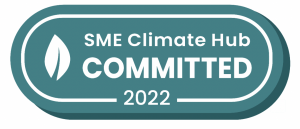Search Engine Optimisation, or SEO for short, can come across as a dark art to many – especially if you have aspirations to reach the top of the search rankings for search terms that you yourself Google every day to see how high up your website appears.
If you’re charity and website is new, my guess is that it doesn’t appear very high at all.
There are some SEO basics that you can put in place that will put you in a good position once your charity starts to grow and you start to attract more interest.
Here are a few SEO basics that you can do right now to help get your charity on the right track to reaching the right people through the right search results.
In this article:
Manage Your SEO Expectations
You have a new charity and a new website, so you can’t be expected to compete with charities that have had an online presence for years or even decades – some with the budget and expertise to match.
Ranking highly on competitive terms takes months and even years of work, so have patience and understand that it will take time for your website to appear in the places you want it to.
Besides, running a charity means that you’ll have plenty of other tasks and projects to be getting on with in the meantime.
Educate yourself about SEO basics
If you’re impatient and want to rank higher now (and as an entrepreneur, my guess is that this applies to you), then you should start to get your head around how SEO works.
There’s plenty of guides out there, but my favourites are:
- SEO for charities by Empower (thats us!)
- The Beginner’s Guide to SEO by Moz
- Strategic SEO for Startups by Kalzumeus Software
- Buffer’s Guide to SEO
All of these guides are stuffed full or excellent explanations, tips and advice on how SEO works.
If you don’t know how search rankings work, take a look at Google’s How Search Works for a fantastic beginner’s guide, but slightly more technical than the others I’ve mentioned here.
Get reading these resources and by the end you’ll be an SEO expert! Well, an SEO novice anyway.
Create high-quality content
When they first launch, many charity websites don’t have much content on them.
They might have a home page with some information on the products they sell or the services they offer, an about page with more people behind the charity, and a contact page letting people know how they can get in touch.
This means in total that the whole website will have less than 500 words in total, some even less.
Google sees this as “Thin Content”, where if there is a low amount of text on a page then it raises a flag that the content isn’t very high quality.
Compare that to a website where every page has at least 500 words and this gives a sign that this is better content and will sit better with Google.
No technical wizardry needed, just create more good content and copy on your website’s pages now.
But don’t just fill space for the sake of it. Make sure the content you’re creating is relevant and useful to the people you want to visit your site.
Add an SEO plugin
If you’re site is built on WordPress, as over 60% of content-based websites are, you’ll be able to add plugins to your site to make the whole SEO process much easier and clearer.
Don’t know what WordPress is? WordPress is a blogging platform that requires no coding knowledge and is free software – it’s the domain name and hosting you pay for, which is typically about £3-5 per month. It gives you a website that is easy to add pages and a blog to, and gives you themes so you can customise the look and feel of your site. The Empower site is built on WordPress, so take a look at WordPress.org for more info.
Want to know if a website was built on WordPress? Head to builtwith.com and enter the url of the website you’re looking to find out about. Scroll down the results page and look for “WordPress” under the “Content Management Systems” section.
Two of the most used plugins are WordPress SEO by Yoast and All in One SEO pack for WordPress.
Once you have installed one of these plugins, there’s lots of options for optimising your site and its content to rank better in search results.
Don’t be intimidated by the wealth of options – just work your way through each option on each screen and you’ll have boosted your site that little bit more.
You’ll want to check for the use of your charity name and products on popular and emerging social media websites.
Not only will this help you appear in search results – for example, Twitter profiles often rank highly for charity names – but you should grab your name and secure your brand anyway, before someone else does and you have to deal with a sticky situation at a later date or have to think of alternatives you can use.
There are a few tools you can use to see which usernames are available: NameChk and KnowEm.
Both services will check hundreds of websites for you, but it can take a long time to register for all of them. Best to stick to the main services you’ve heard of, such as Facebook, Twitter, Youtube, LinkedIn, etc – but also any that may apply to your charity – such as Dribbble, Behance, and Pinterest.
Start building links to your website
The main thing that Google looks for when determining how high up your site should rank is how many authoritative sites link back to your site. The more authoritative links you have, the higher you’ll rank.
So how do you get high-ranking websites to link to you?
The first way has already been covered: by creating high-quality, relevant and useful content throughout your website. Sites will link to if you provide something beneficial to them, so think of resources that you’d like to read, then create them and add them to your site.
Once you’ve created that content, post it to the social networks that you’re part of. Although they don’t count for SEO rankings as getting other sites to link to you, they all add up and are a clear signal to Google if a piece of content on your site is popular enough to be shared many times across social networks.
Another way is to write guest articles for other influential sites. Although Google is starting to crack down on sites that host or post too many guest articles, as long as you create high-quality and relevant content then you’ll be fine.
Look for sites that you read in your charity’s area of interest, then contact them to see if they’ll accept guest articles. It can also help to suggest a few headlines of articles you could contribute for them, so make them interesting.
And if you do get a guest article published, make sure you get that all important link back to your site!
Start a blog and post regularly
Blogging may be getting old as a term, but it’s still as useful as ever – especially for new websites.
By starting and posting regularly to a blog on your website, you’ll be creating more high-quality content for Google to index (the bit where it looks at your website and sees what new content there is), giving yourself more content to promote across social media, and encouraging other sites to link to your website because of the great content on your blog.
Not sure what to blog about or how to structure your posts? Take a look at sites like Copyblogger and Problogger for lots of tips and advice.
You don’t have to publish every day – aim for once or twice a month, then build that up to once a week and more regularly from there.
It will take time to build up content and an audience for your blog, but once you do your blog could become one of the main marketing channels for your charity.
In summary, the SEO basics involve publishing high-quality and relevant content, posted regularly and distributed to the right places to help build inbound links. That’s all there is to it, but that’s easier said than done.
Did I leave something out? Have any questions about SEO for your charity? Let me know in the comments!





SEO Basics for your New Website http://t.co/sowP0X6lne #SEO #Content
Thanks for the tweets @cimcharity @zoeamar! http://t.co/qy6g2Y3rOR
RT @zoeamar: Great tips by @benrmatthews on SEO basics for new websites http://t.co/z4tgCUynQG via @montfortio
RT @cimcharity: Great tips by @benrmatthews on SEO basics for new websites http://t.co/K8hAayiBOE via @montfortio
RT @benrmatthews: RT @zoeamar: Great tips by @benrmatthews on SEO basics for new websites http://t.co/HimwTHGYDo via @montfortio
RT @benrmatthews: RT @zoeamar: Great tips by @benrmatthews on SEO basics for new websites http://t.co/HimwTHGYDo via @montfortio
SEO Basics for your New Website – Empower http://t.co/7S4XWWl6Nx
RT @montfortio: RT @cimcharity: Great tips by @benrmatthews on SEO basics for new websites http://t.co/K8hAayiBOE via @montfortio